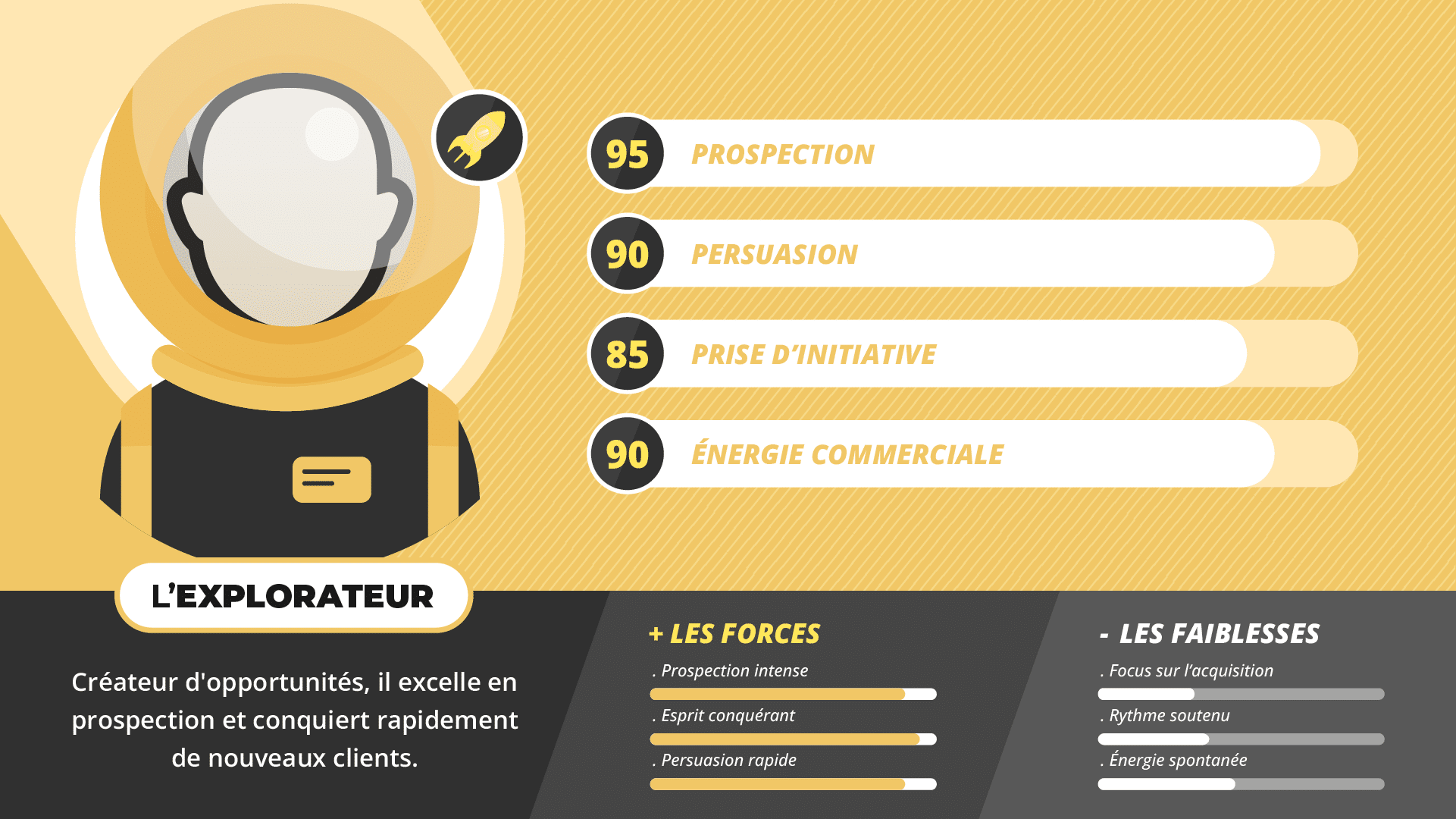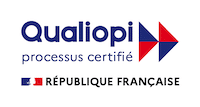L’expérience client digitale est devenue un facteur clé de conversion. Aujourd’hui, plus de 80 % des consommateurs se renseignent en ligne avant d’acheter. Pour capter leur attention et les accompagner jusqu’à l’acte d’achat, votre dispositif digital (site web, réseaux sociaux, appli mobile) doit répondre à leurs attentes à chaque étape du parcours.
Au risque de passer à côté d’un outil majeur d’amélioration de l’expérience Client, et donc de transformation des leads en clients ! Faites-vous partie de ces marques ? Pour vous permettre de le vérifier rapidement, nous avons établi une checklist des attentes client auxquelles votre dispositif digital doit absolument répondre.
Voici les 5 fondamentaux à ne surtout pas négliger.
1. Disposer d’une information produit claire
Votre dispositif digital doit avant tout répondre aux recherches des internautes préparant un achat.
Ceci bien sûr s’ils recherchent votre marque ou vos produits, mais également si ils font une recherche plus générique sur les types de produits que vous vendez.
80% des Internautes déclarent avoir recours à internet pour se renseigner avant d’acheter un produit ou un service… un score qui atteint 87% en région parisienne et 92% parmi les professions libérales et cadres supérieurs, d’après une étude réalisée par l’Ifop en décembre 2014, intitulée « L’impact de l’e-réputation sur le processus d’achat ».1
Les consommateurs doivent pouvoir trouver de l’information riche et pertinente au sujet des produits ou services qui les intéressent sur votre site et par le biais de vos pages sur les réseaux sociaux. Une information qui les aidera à faire le bon choix, en ligne ou en magasin.
La plupart des sites internet remplissent ce « devoir d’information » et présentent leurs produits et services, mais cette présentation est-elle réellement utile et contribue-t-elle à la conversion ? La fiche produit est-elle suffisamment complète, avec une argumentation structurée et des éléments concrets ? Le prix est-il clairement affiché ? Et s’il ne l’est pas, une redirection vers une demande de devis est-elle prévue ? Le visiteur peut-il accéder facilement à un contenu informatif l’aidant à prendre sa décision (avis clients, tests produits, cas d’usage, etc.) ? Pour un site e-commerce, les conditions de livraison et de retour sont-elles visibles et compréhensibles, y compris depuis une navigation mobile ?
Enrichir ses fiches produit pour améliorer l’expérience client digitale
Il ne suffit plus d’une simple description accompagnée d’une photo standard. Aujourd’hui, un point central de l’optimisation de l’expérience utilisateur réside dans la capacité à accompagner le client dans sa projection : à lui faire comprendre les bénéfices concrets de l’usage du produit, à créer un lien émotionnel, et à le guider à travers un parcours client digital fluide et engageant.
Dans cette logique, la fiche produit ne doit pas être un point d’arrivée, mais un levier au sein d’une stratégie digitale plus globale. Elle peut être enrichie par des formats complémentaires comme des tutoriels vidéo sur YouTube, des articles de blog thématiques partagés sur les réseaux sociaux, ou encore des galeries d’inspiration sur Pinterest. Autant de contenus qui viennent soutenir un tunnel de conversion structuré, nourri par un CRM efficace et une logique de personnalisation continue.
Enfin, en combinant ces éléments avec une approche orientée satisfaction client et un service client omnicanal, vous multipliez les chances d’accompagner l’utilisateur à chaque étape de sa réflexion et donc de le transformer en client fidèle.
Découvrir notre livre blanc EXPERIENCE CLIENT :
Pourquoi votre entreprise doit-elle s’emparer du sujet ?
2. Joindre rapidement le service client
Avoir un contact pour joindre facilement le service client en cas de question ou de problème, cela semble une évidence… et pourtant, cela relève parfois du parcours du combattant sur certains sites internet ! A tel point qu’il arrive parfois que l’on se demande si cela n’est pas volontaire ! Procéder ainsi serait pourtant un très mauvais calcul de la part des marques : il ne suffit pas de « cacher » le numéro de téléphone ou l’adresse e-mail du SAV pour échapper aux questions et autres mécontentements. Au contraire, rien de tel pour alimenter l’impatience et l’énervement des clients !
En particulier aujourd’hui, dans un contexte où la multiplicité des canaux de contacts possibles a rendu indispensable aux yeux des usagers et clients le fait de disposer d’un moyen facile et immédiat pour joindre une enseigne.
“Si les cyberacheteurs sont attachés aux moyens de contact traditionnels, ils veulent néanmoins avoir le choix en matière de service client” explique une étude CCM Benchmark / iAdvize datée d’avril 2015.2
Les cyberacheteurs perçoivent tout particulièrement l’utilité des méthodes d’assistance en temps réel pour les aider lors de phases critiques du parcours d’achat : problème à l’étape du paiement, blocage au moment de l’identification ou du remplissage du formulaire de commande.
Faciliter l’assistance client en ligne pour fluidifier le parcours d’achat
Ne l’oublions pas : le plus souvent, lorsqu’un client se rend sur un site de marque, outre l’envie d’acheter / se renseigner sur un produit, c’est parce qu’il cherche de l’aide. La première étape pour l’aider passe obligatoirement par la foire aux questions (FAQ), qui, si elle est bien faite, permettra d’éviter un certain nombre d’appel à votre service client.
De la même façon, pouvoir télécharger de la documentation sur vos produits ou accéder à des tutoriels (vidéo ou non) permettra d’éviter un certain nombre d’appels directs ou de sollicitations sur les réseaux sociaux.
Mettre en place un service client omnicanal, visible et réactif
L’idéal est de donner du choix au client sur la façon de vous joindre, et de le spécifier clairement, comme le font par exemple IKEA ou Michel et Augustin, sur leurs pages de prise de contact.
Une fois ces basiques mis en place, vous pouvez proposer un moyen de joindre votre service client en direct : e-mail, téléphone, chat ou réseaux sociaux. Rendez les canaux disponibles immédiatement visibles et facilement accessibles. Expliquez clairement qui va recevoir l’e-mail ou qui va décrocher. Confirmez la bonne réception d’une demande, et annoncez combien de temps sera nécessaire pour la traiter. Dans la plupart des cas, ce discours “pédagogique” suffit ou contribue très largement à faire baisser le niveau de tension d’un client mécontent !
Ne négligez pas enfin les réseaux sociaux. Si vous avez une présence sur Facebook ou Twitter, assurez-vous que la personne en charge de ces comptes (idéalement votre Community Manager), puisse faire suivre rapidement les demandes en interne, selon un process efficace et formalisé pour permettre une réponse rapide et pertinente, et un suivi partagé et « historicisé ». Vous pouvez également créer une page Facebook ou un compte Twitter dédiés au SAV, de manière à ne pas mélanger conversations d’engagement et conversations de service client.
3. Bénéficier de l’ensemble des services depuis un mobile
En 2016, proposer une version « mobile-friendly » de son site internet est devenu un prérequis indispensable. Pourquoi ? Parce qu’1 habitant sur 3 est aujourd’hui équipé d’un smartphone au niveau mondial.
Plus important encore :
“Le trafic issu des terminaux mobiles est récemment passé devant celui des ordinateurs : aujourd’hui plus de 50% des recherches sur internet sont effectuées depuis un terminal mobile (smartphone ou tablettes).3
Vos clients cherchent donc vos produits, consultent votre site ou vos contenus en ligne la moitié du temps depuis leur téléphone personnel !
Et il n’y a rien de plus frustrant sur un mobile qu’un site lourd et long à l’affichage avec des boutons minuscules impossibles à cliquer… Il est donc devenu difficile de se passer d’un site adapté à la consultation depuis un device mobile, à plus forte raison pour les e-commerçants.
Optimiser la navigation mobile pour une expérience client fluide
Répondre à cette attente de vos clients suppose d’apporter une attention particulière à la hiérarchie de l’information, aux formats d’images utilisés, au temps de chargement des pages et à la possibilité de réaliser les opérations clés (telles que le paiement en ligne ou le téléchargement d’un contenu à forte valeur ajoutée) depuis un mobile.
Les moteurs de recherches (tels que Google ou Bing par exemple) proposent désormais des outils spécifiques vous permettant de tester rapidement et simplement la compatibilité de votre site internet avec les terminaux mobiles.
Responsive design ou application mobile : quelle solution privilégier ?
Tout le monde n’a pas forcément la possibilité ou les moyens de créer une seconde version de son site internet spécialement adaptée à la consultation depuis un mobile. Le plus simple, le plus efficace et le moins coûteux est de concevoir votre site principal en « responsive design » : son contenu et sa présentation s’adapteront automatiquement au device utilisé.
Vous pouvez également proposer à vos clients une application mobile. Celle-ci doit avoir une vraie valeur ajoutée par rapport à votre site web, et notamment apporter des solutions aux besoins client dans un contexte de mobilité. Pour qu’elle soit téléchargée et utilisée, il faut également que votre client trouve un intérêt à l’utiliser de manière régulière. Si le service proposé par votre application est un service « one shot », alors mieux vaut le mettre en place sur votre site en responsive design, en optimisant le référencement de la page liée à ce service.
4. Trouvez facilement le point de vente le plus proche
Votre site internet, qu’il soit un site e-commerce ou un site vitrine, doit servir de pont entre votre présence en ligne et votre présence physique.
Avant de réaliser un achat sur Internet, plus de 77% des 18-24 ans confient évaluer ou essayer le produit directement dans un magasin. Ils sont même 79% parmi les 25-34 ans.1
Inversement, avant de réaliser un achat en magasin, 73% des français interrogés consultent des avis de consommateurs en ligne sur des blogs, des forums ou des sites de consommateurs.
Bref, point de vente physique et site internet sont plus que jamais liés et ne se cannibalisent pas l’un l’autre.
Connecter site web et point de vente pour une expérience client cohérente
Il est donc important de mettre à disposition une liste de vos points de vente ou si vous ne distribuez pas vous même vos produits, la liste de vos distributeurs. Dans l’idéal et dans la logique de présence et d’utilisation dans un contexte mobile, aider vos clients à situer rapidement le point de vente le plus proche de leur position actuelle représente un vrai service à valeur ajoutée.
Géolocalisation et services mobiles : aider le client à trouver votre boutique
Vous avez probablement déjà dû géolocaliser vos magasins sur Google Maps. Mais aujourd’hui, au-delà de donner accès à la carte complète et interactive de vos magasins, il est également utile d’être référencés par les nombreuses applications mobiles permettant de recevoir automatiquement sur son mobile les promotions du moment d’une boutique lorsqu’on circule à proximité (Groupon City Deal), ou de cumuler des points/bonus à l’entrée dans une boutique (Shopkick). Ou encore, de comparer les prix pour un même produit dans l’ensemble des boutiques qui le vendent à proximité de votre position actuelle (Géocompare) !
5. Bénéficier d’une expérience personnalisée et si possible, « augmentée »
Lorsque l’information client est claire et structurée, la prise de contact simple, la navigation mobile optimisée, et enfin la localisation des boutiques rendue aisée, un élément de différenciation majeur pour votre site sera d’intégrer des fonctionnalités « personnalisées ».
La personnalisation : un levier puissant pour enrichir l’expérience client digitale
Reconnaître votre client à son arrivée sur le site en le saluant par son prénom, ou afficher en priorité les offres produits pour lesquelles il a déjà montré un intérêt sont autant d’éléments qui permettent de re-créer de la « proximité » en ligne.
My FeelBack, par exemple, remercie une personne par son prénom et cite le nom de sa société dans son message affiché suite au téléchargement de l’un de ses livres blancs.
Créer une relation client unique grâce à des fonctionnalités sur-mesure
Vous pouvez également proposer des contenus qui s’adaptent au profil et à l’historique de navigation, envoyer un message personnalisé avec une promotion spécifique suite à un « abandon de panier » , ou créer des espaces réservés à des clients « premiums », leur permettant d’accéder à des contenus à valeur ajoutée…
Ou encore proposer une « expérience différente » grâce à un design original, des messages inédits, comme le fait bien le site de Michel et Augustin par exemple.
Ou tout simplement leur proposer de s’abonner à une mailing liste thématique leur permettant de recevoir une information clé en avant-première (lancement des vente d’abonnements pour les matchs d’une équipe de foot, par exemple).
De telles fonctionnalités améliorent l’expérience utilisateur, vous permettent d’affiner encore vos performances et surtout, offrent un impact émotionnel fort et marquant pour vos clients .
Mais avant d’envisager de déployer ce dernier étage de la fusée digitale, n’oubliez pas les fondamentaux détaillés dans cet article : pour générer l’effet “wahou” en devançant les attentes conscientes de vos clients, il faut d’abord répondre aux attentes premières sur les points incontournables !

Cet article vous a été utile? Partagez-le 🙂
- L’impact de l’e-réputation sur le processus d’achat, IFOP, décembre 2014
- Comportements d’achat et engagement client en ligne, CCM Benchmark – IAdvize, avril 2015
- Usages et attentes des français hyper-connectés, Google – IPSOS, 2015






